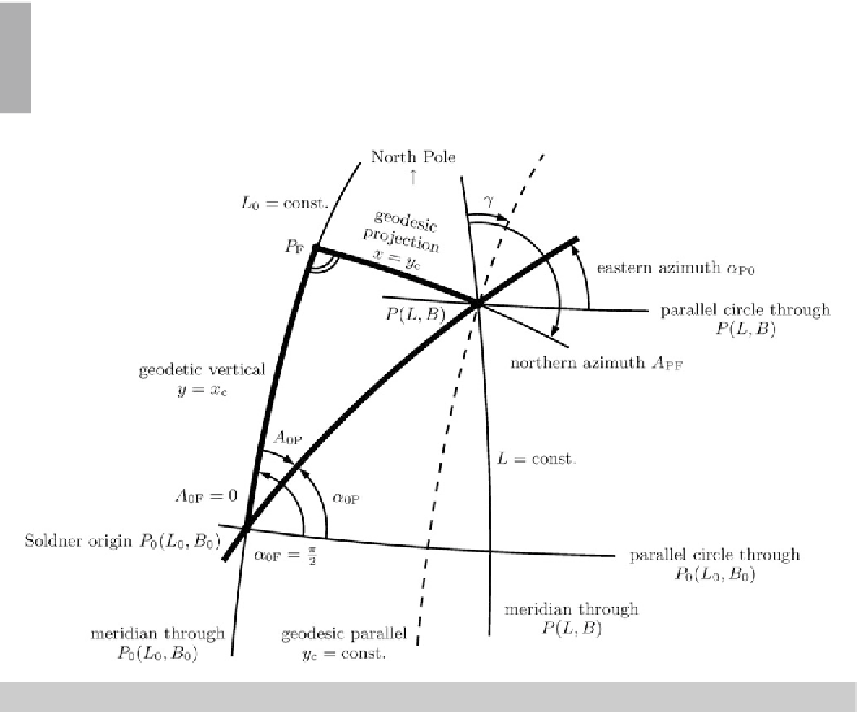Geography Reference
In-Depth Information
20-3 Soldner Coordinates: Geodetic Parallel Coordinates
Soldner coordinates: geodetic parallel coordinates. Geodetic projection, geodetic field of
geodesics, and meridian convergence. Soldner coordinates as elements of an ellipsoid-of-
revolution.
In this section, “geodetic parallel coordinates” as developed by J. H. Soldner (astronomer and
geodesist: 1776-1833) are reviewed. His basic paper is entitled J. H. Soldner, Theorie der Lan-
dervermessung 1810, Herausgeber J. Frischauf, Oswalds Klassiker der exakten Wissenschaften,
No. 184, Leipzig 1911. It formed the basis of local surveys in many countries like Bavaria,
Wurttemberg, Baden, Hessen, and Prussia. The basis of “geodetic parallel coordinates” compet-
ing with C. F. Gauss's Gauss-Krueger coordinates is the notion of a “geodetic field of geodesics”
in the following sense.
If a field of geodesics
and
its orthogonal trajectories are
used as coordinate lines, then we can use its arc length of
geodesics as coordinates. In reverse, if we express in a coor-
dinate system the line element as d
s
2
=d
u
2
+
g
(
u, v
)d
v
2
,
in consequence, the
u
coordinate line is a geodesic.
Fig. 20.4.
Soldner coordinates, geodetic parallels, conventional coordinate system
{
x
c
,y
c
}
, systematic Soldner
coordinates
{
y,x
}
=
{
x
c
,y
c
}
,footpoint
P
F
of a geodetic projection, conventional (northern) azimuth
A
,system-
atic (eastern) azimuth
α


Search WWH ::

Custom Search